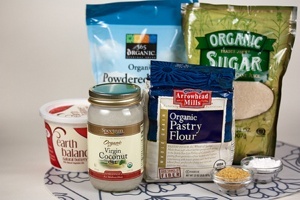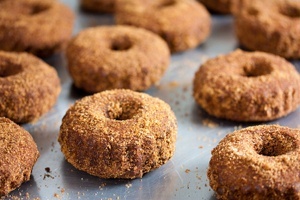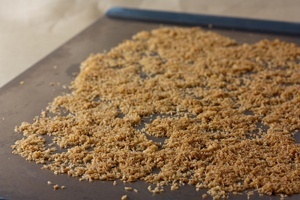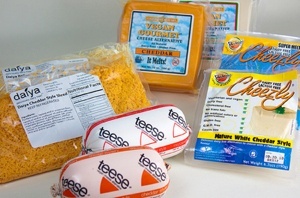Veganbaking.net
Vegan Baking Articles
Vegan Baking Guides
How to Veganize a Cake Recipe - The Food Science behind Vegan Cakes
How to Veganize a Cake Recipe - The Food Science behind Vegan Cakes
6
Comments (34)
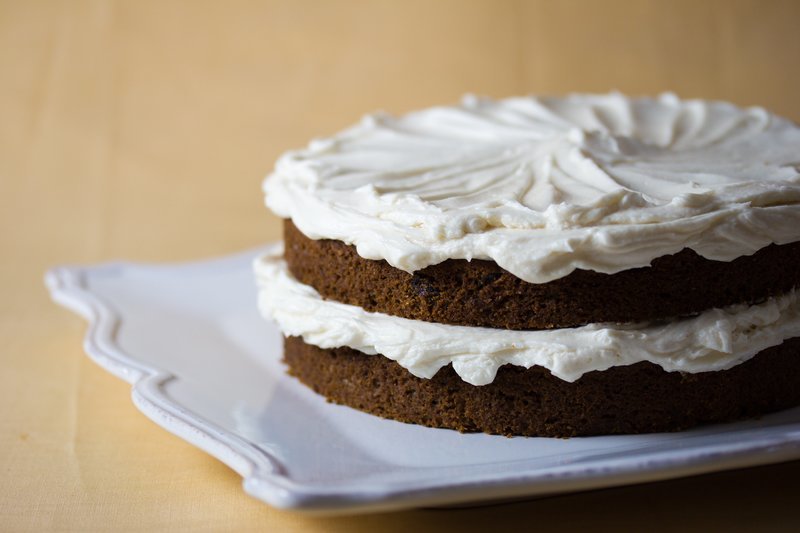
Sometimes you just have a recipe that you like. You grew up with it. Like the teddy bear that accompanied you through the thick and thin of your youth, certain sweets have always been there for you to bring you up when you’re down, celebrate your milestones and bring you and your friends together. They’re almost a part of you. You have a subconscious bond with these types of foods because you identify with them, they make you feel good and they define part of the personal culture that is you. This is part of the definition of comfort food.
But now you’re vegan and that german chocolate cake that your grandmother bought you up on is strictly verboten by the vegan police. Or it might not be, but you’re trying to eat less of it as you transition your diet to one that involves less animal products. You could just find a cake that’s been designed to be vegan from the ground up, but that doesn’t necessarily mean it’s going to measure up to Grandma’s cake. What a crisis! What are we going to do?
For me it was my Mom’s carrot cake. Oh so luscious, with the kind of carrot shreds you could see and the perfect balance of pineapple, raisins and a hint of cardamom. “Sorry Mom, I’m vegan now and I’m not going to eat that anymore”. I was almost as surprised to say it as she was to hear it. Enough of this nonsense! I was going to have to figure out how to veganize her recipe. But where would I start? I wish I could go back in time and write an article that would help me understand the food science behind veganizing cakes- Wait a minute! If I write one now, all we’ll need is for time travel to be invented. Then I’ll be able to go back in time and email it to myself. Well then, let’s get started!
Vegan cake disasters
Have you ever veganized a cake before? What was the result? When I started experimenting with converting traditional cake recipes to be vegan, I started to get real familiar with overly moist cakes that appeared to rise in the oven, but would then crash into an almost pudding consistency in the middle. Sometimes the sides would come out almost okay, if a bit on the dense and sticky side. These cakes also seemed more sweet which was likely due to them containing considerably less air which tended to concentrate sweetness. Even after adding more baking soda and baking powder, I could never get them to hold their rise and have an acceptable crumb. I was starting to get really good at baking up really moist sunken discs.
I decided that my sunken discs were occurring because there were no eggs in my cake batter. After all, you must have eggs in order to make cake right? Oh and cake flour too! Bakers have been using eggs in cakes for at least a hundred years. So I made several different versions, all using different types of vegan egg replacers for the batter. I also baked cakes with and without cake flour and the cakes became even more sunken! I was either going to have to pioneer a dessert based off sunken discs, take up skeet shooting, or figure out this cake veganization thing once and for all.
Understanding traditional cakes
It wasn’t until I started to look into the building blocks of traditional cake that things started to become more clear. That’s right, in order for cake batter to bake into a light and airy cake, certain variables absolutely must be in place.
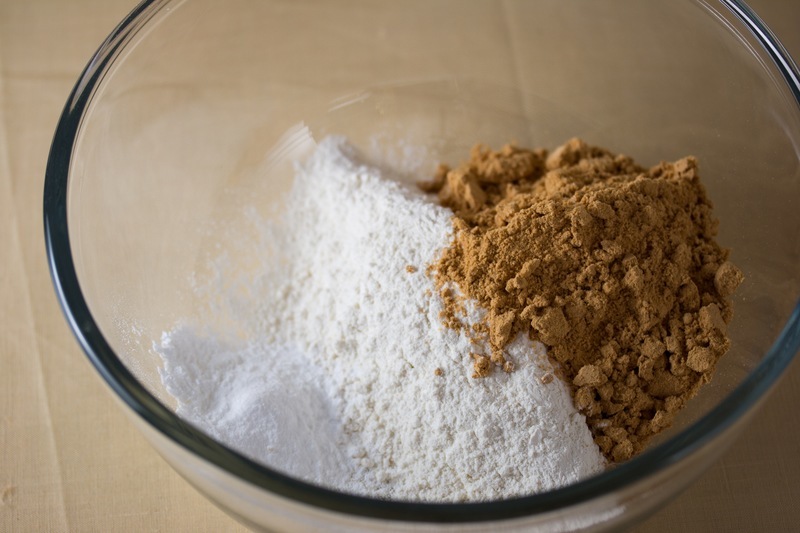
Cake building blocks
Both traditional cake and vegan cake share the same end goal: to bake a sweet batter that rises via trapped C02 (carbon dioxide) and steam bubbles before setting and cooling in place which results in a light and airy crumb. This is achieved with ingredients that fall into the following four categories, with some ingredients falling under multiple categories.
Structure builders
These are the scaffolding of our cakes, working like rebar in concrete. These ingredients usually consist of coagulated egg proteins and/or gluten that forms a three dimensional protein network throughout the starches, fats, sugars and steam/gas bubbles of our cake. Too much structure results in a cake that can be dry and stiff like bread. Too little can result in a cake that rises and crashes into a moist pudding consistency.
Tenderizers
These ingredients are the opposite of structure builders. Tenderness can refer to the softness of the cake and the fine, small size of the crumb. Fats cause proteins to get slippery so they’re inhibited from coagulating to form structure. Water disperses glutenin and gliadin, the proteins that combine to form gluten, to the point of where they can’t join as completely. Sugar’s insatiable appetite for water can leave too little left over for egg proteins and/or gluten to bind together completely, leading to cakes that rise and crash.
Acids such as apple cider vinegar can increase the tenderness of cakes because they slightly inhibit the coagulation of egg and glutenin/gliadin proteins. They can also promote tenderness by reacting with the alkalinity of baking soda, which produces more C02 gas that results in a higher rising, and thus, lighter cake. When I first got into baking I kept hearing people saying that cake recipes using acids such as apple cider vinegar produce cakes with a nicer crumb. I always thought, “what the heck do they mean by that?” This tenderness is what is most likely meant. Acids also have the benefit of increasing flavor depth as well as reducing browning to some extent.
Salt should have a special mention here, because it tends to increase gluten strength to some degree. This is the opposite of tenderizing but it's worth knowing that it can play a role. Whether it’s noticeable in a cake is up for debate; it's a more well known variable in hearth breads.
Moisturizers
Water is obviously a moisturizer but since sugar is first in line to absorb it and hold onto much of it during baking, the amount of sugar is directly proportional to the moistness of your cake. Fats get interspersed with water and also tends to make cakes more moist.
Drying agents
As egg proteins and/or gluten and gliadin coagulate, they require a large amount of water which can reduce the moisture level of the cake. Starches in the flour also absorb liquid to a smaller extent.
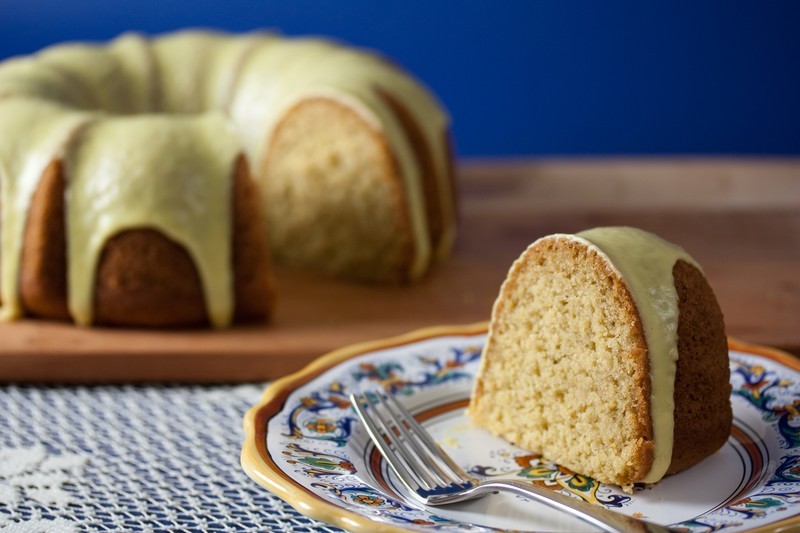
Cake methods
There are several popular methods for mixing cake batter. The two most popular are:
The Quick Bread Method
In this method, also known as the one-stage method, the dry ingredients are mixed in one bowl and the wet ingredients, including eggs in traditional cakes, are mixed in another bowl. The wet ingredients are then transferred to the bowl containing the dry ingredients in one stage. The batter is then mixed until just incorporated. This is the method that most vegan cakes are based from. This is due to two reasons: 1) Vegan cakes usually take advantage of chemical leavening, that is, leavening with baking powder and baking soda. 2) It’s really easy to develop gluten with this method. More on that later.
Here's an example of a recipe using the Quick Bread Method.
Here's an example of a recipe using the Quick Bread Method.
The Cream Method
In this method, the semi-solid fat such as butter or shortening is beaten together with the sugar. The sugar crystals cut through the fat during beating and create microscopic air pockets. These tiny pockets end up seeding the cake batter with larger bubbles as soon as the batter is exposed to heat and C02 and steam are generated. After the fat is beaten with the sugar, eggs are beaten into the mixture along with other flavorings such as vanilla extract and spices. Lastly, the flour is carefully mixed or folded into the mixture so a minimal amount of gluten is developed.
In traditional cakes, the Cream Method is usually superior because it allows for a lighter and fluffier cake due to the seeding of the air pockets in the batter as well as egg protein coagulation providing structure and gas/steam holding capacity. In vegan cakes, this method isn’t often used because due to the absence of the eggs, the batter isn’t going to work the same way to justify the extra effort.
Here's an example of a recipe using the Cream Method.
Here's an example of a recipe using the Cream Method.
What happens during cake baking, a timeline
Now that we understand the building blocks of traditional cakes, how do they play out when exposed to the heat of the oven? Here’s an approximation of how the magic happens.
1) Egg proteins and/or glutenin and gliadin absorb moisture as they become denatured (distorted) by the heat.
2) The starches in the flour, in a crystallized granular state, begin to absorb water and become semi-solid. Sugars begin to melt.
3) Egg proteins (mostly albumen) and/or gluten begin to form protein films. These films trap rising C02 produced by the baking powder and baking soda, as well as steam being produced by the water-based ingredients.
4) The C02 and steam continue to push the cake up with rising power. This is the leavening process.
5) The C02 and steam begin to subside just as the coagulated proteins are beginning to firm up and the cake starts to dry out. The semi-solid starches are fully infused with mostly water and smaller amounts of fat and sugar molecules.
6) The cake is removed from the oven. The batter is still in a mostly liquid state because the starches are still semi-solid and the proteins haven’t completely set yet. During cooling, the protein network solidifies which reinforces the cake structure and the starches partially recrystallize which adds a smaller degree of firmness. The C02 and steam leave the cake resulting in a mass of millions of empty pockets.
Vegan cakes are different
Once I familiarized myself with the traditional cake building blocks and methods, I began to realize that the reason I was having so much trouble with veganizing cakes was that I was still treating them as traditional cakes. Vegan cakes are completely different animals and need to be reworked with vegan-specific building blocks that actually buck cake tradition. Don’t tell Grandma!
"What about my aunt’s cake recipe that uses four eggs? Can I veganize that?"
In a word, no. Traditional cake recipes that rely on any more than about two eggs are different beasts. These cake recipes are using egg proteins to make up the majority of the cake structure, displacing flour entirely in some cases. For example, in a cake recipe that uses eight eggs, almond flour and no wheat-based flour, walk away. You’re not going to be able to make up the structure building power of eggs if they’re providing 100 percent of the structure in the recipe. You’re better off finding another recipe and saving yourself your sanity. It’s just not worth the trouble.
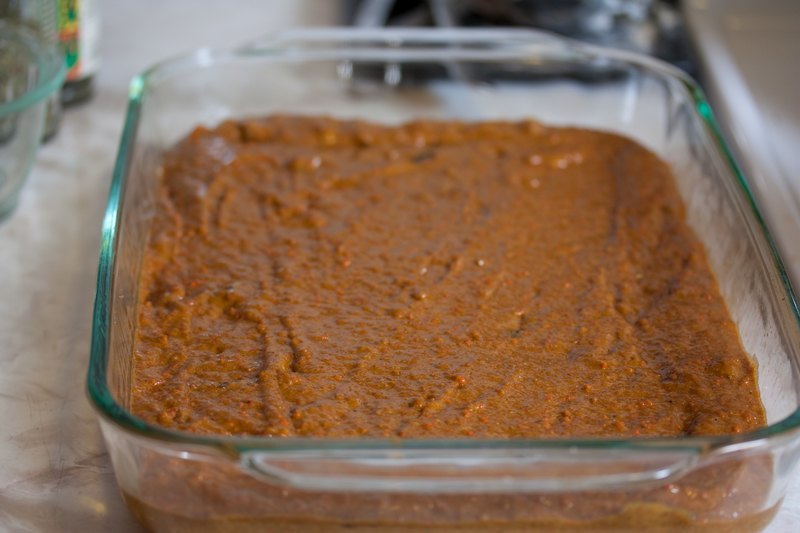

Okay, enough of this food science jibber jabber- How do you veganize cakes?
Now that you know the basics of cake science, I have some great news: Veganizing cake recipes will probably be easier than comprehending this guide. You now have what it takes! Here are the main ways in which it’s done:
1) Use gluten as your main structure builder
If you only remember one part of this guide, remember this: In traditional cakes, it’s all about minimizing gluten formation and utilizing egg proteins to build structure. In vegan cakes, the absence of the egg makes it so that it’s all about taking advantage of gluten formation to build structure.
This means that when you take the egg out of a cake recipe, you’re going to be taking out the primary structure builder, which means that the cake is going to fall flat. Adding vegan egg replacers won’t work because you’ll only be adding more starches, which is going to hold onto even more moisture during baking, making the issue worse.
This obviously doesn’t apply if you’re baking vegan gluten-free cakes. In this case, I recommend experimenting with specialized gluten-free flours. I have several that are forthcoming. As soon as they’re fully tested, you can be sure that I’ll do extensive writeups on them.
2) Forget everything you know about proper cake batter consistency
The trick is to reduce the water content or increase the flour called for in your traditional cake recipe until the batter is the consistency of soft serve ice cream. You know that consistency of traditional cake batter where it’s similar to pancake batter? The best thing you can do for yourself when baking vegan cakes is to forget about this association. Vegan cake batter is so thick that the first few times you work with it you might be in disbelief, thinking that it must need just a bit more water. Don’t do it!
3) Forget about egg replacers
Here’s a little secret: Nowadays I don’t believe egg replacers are necessary for most cakes. In fact, I believe they’re actually detrimental. This is because, as I mentioned earlier, most vegan egg replacers don’t develop structure via protein networks as eggs do. In fact, they're not really structure builders at all. Vegan egg replacers work as binders which allows ingredients to stick together more by using long chains of sugars known as polysaccharides. These types of compounds make batters and doughs excessively gummy so they clump together and often result in a more dense, chewier baked item. This doesn’t work in cakes, where you need to build a reinforcing structure and have a means of trapping rising C02 and steam. Since polysaccharides hold onto excess water, they’re going to act as tenderizers which will result in cakes that rise and crash; exactly the opposite of what we want.
Keep in mind that in gluten-free vegan baking, certain starches and gums such as xanthan gum can be marginally effective in trapping these rising gas bubbles. But if you’re not baking gluten-free and you already have gluten in your batter, gluten will work far better.
4) Embrace failure because it’s the best way to learn baking
This may sound funny, but when I veganize a cake recipe, I usually plan to fail at least once before I make the final cake. And why not? Cake ingredients are usually cheap and cakes are quick to make so failure will teach you immensely. Fail is just another word for learn. If you don’t fail, you don’t learn. One of the goals of this guide is to empower you with the knowledge to know how to adjust your cake recipe if it doesn’t turn out and the drive to succeed to sugary success. Reading words alone will only teach you what direction to go.
I first bake with a thicker batter that’s the consistency of soft serve. I bake until a toothpick inserted in the middle of the cake comes out clean or with a couple crumbs attached. After the cake has cooled I assess it by taking note of how much or how little it rose as well as assessing flavor. Is it too sweet? Does it need more salt to enhance the flavors I'm trying to convey? I then move to next steps, such as the ones outlined in the chart below.
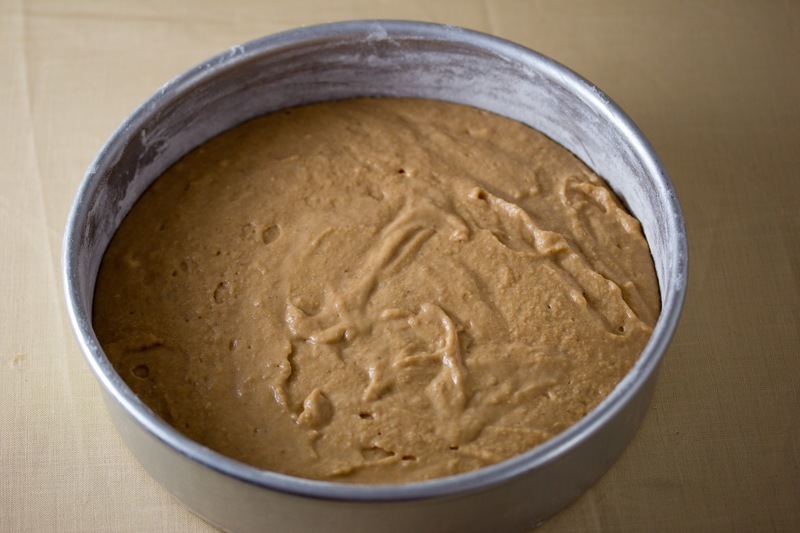

Vegan Cake Troubleshooting
| Cake Condition | Explanation | Fixing Options |
|---|---|---|
| Sank in the middle | Usually caused by batter being too thin, lack of leavening power or excess sugar robbing water from gluten. Can also be caused by excessive fat. | Reduce water content. Reduce sugar content. Increase baking powder and baking soda. Reduce fat content |
| Didn't rise at all | Usually caused by batter being too thin or lack of leavening power. | Reduce water content. Increase baking powder and baking soda. |
| Too Dry | Usually caused by excessive baking time or lack of water and/or fat. | Decrease baking time. Add additional water and/or fat. |
For convenience purposes, I always advocate finding a cake recipe that’s been designed to be vegan from the ground up. But if you’re feeling adventurous or you’re wanting to keep your favorite traditional family heirloom recipe alive, you now have what it takes to sharpen your whisks, put your baking helmet on and veganize almost any cake recipe that crosses your path.



